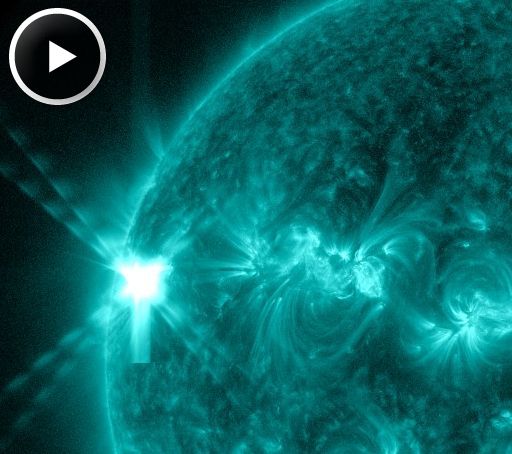- Get link
- X
- Other Apps
- Get link
- X
- Other Apps
I work in a kindergarten class as a teacher's aide. The teacher was teaching nursery rhymes, and we were reading "Twinkle Twinkle Little Star." The kids were directed to draw a picture of the scene, and the teacher emphasized that the sky should be black because the stars only come out at night.
One little girl piped up, saying, "Except for one very special star, and that's the sun, which comes out in the day." Very true, little girl! Good for you.
Our 'very special star' has had indigestion lately. It is an active star and not immune to blurps and belches. When these happen they are called CME's or Coronal Mass Ejections. The sun pitches a filament of plasma off itself and it hurls out into space. If the sunspot from which it emanates is pointed into the blackness of space (where all the other not-so-special stars are, lol) then it floats harmlessly away. That is good. If the sunspot is pointing in a direction of the earth, when the CME ejects and travels through space, it will hit the earth. That could be bad.
The force with which the CME ejects is on a rating system. Just as earthquakes are rated on a Richter scale, and tornadoes are rated on a Fujita scale, (F-scale) so are CME's. Here is spaceweather.com's explanation of the rating system for solar flares;
All this to say that the sun has been extremely active this week. Spaceweather's report today says,

Pretty, isn't it?! The LORD does good work!
One little girl piped up, saying, "Except for one very special star, and that's the sun, which comes out in the day." Very true, little girl! Good for you.
Our 'very special star' has had indigestion lately. It is an active star and not immune to blurps and belches. When these happen they are called CME's or Coronal Mass Ejections. The sun pitches a filament of plasma off itself and it hurls out into space. If the sunspot from which it emanates is pointed into the blackness of space (where all the other not-so-special stars are, lol) then it floats harmlessly away. That is good. If the sunspot is pointing in a direction of the earth, when the CME ejects and travels through space, it will hit the earth. That could be bad.
The force with which the CME ejects is on a rating system. Just as earthquakes are rated on a Richter scale, and tornadoes are rated on a Fujita scale, (F-scale) so are CME's. Here is spaceweather.com's explanation of the rating system for solar flares;
The Classification of X-ray Solar Flares or "Solar Flare Alphabet Soup"There is a difference between a solar flare and a coronal mass ejection, but let's not get too technical. You can read about the difference here. Suffice it to say that if a flare or a CME knocks out your power, you won't care which is which.
A solar flare is an explosion on the Sun that happens when energy stored in twisted magnetic fields (usually above sunspots) is suddenly released. Flares produce a burst of radiation across the electromagnetic spectrum, from radio waves to x-rays and gamma-rays.
Scientists classify solar flares according to their x-ray brightness in the wavelength range 1 to 8 Angstroms. There are 3 categories: X-class flares are big; they are major events that can trigger planet-wide radio blackouts and long-lasting radiation storms. M-class flares are medium-sized; they can cause brief radio blackouts that affect Earth's polar regions. Minor radiation storms sometimes follow an M-class flare. Compared to X- and M-class events, C-class flares are small with few noticeable consequences here on Earth.
All this to say that the sun has been extremely active this week. Spaceweather's report today says,
"CHANCE OF FLARES: NOAA forecasters estimate a 50% chance of X-class solar flares and an 80% chance of M-class solar flares today. The source would be active sunspot AR1748, which is turning toward Earth.
ANOTHER X-FLARE ON MAY 15: When the week began, the sun hadn't unleashed an X-flare all year long. In only two days, sunspot AR1748 has produced four. The latest X-flare from this active sunspot occured on May 15th at 0152 UT.
In summary, AR1748 has produced an X1.7-class flare (on May 13), an X2.8-class flare (on May 13), an X3.2-class flare (on May 14), and an X1-class flare (on May 15). These are the strongest flares of the year, and they signal a significant increase in solar activity."

Pretty, isn't it?! The LORD does good work!

Comments
Post a Comment